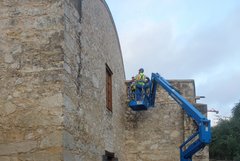Over the past 50 years, the Alamo Church has shown increasing evidence of accelerating rates of wall deterioration, despite preservation efforts. To properly assess the extent of this tricky problem, in September 2016, the Alamo’s professional conservator, Pam Jary Rosser, undertook a low-cost monitoring project. Black paper was laid out in four rooms to determine how much wall degradation was occurring monthly. Monitoring projects like this are vital to our understanding of how and why the Alamo is deteriorating – knowledge that then helps conservators like Pam preserve the Alamo better.
Taking a Closer Look at the Alamo’s Crumbling Stones
A Simple But Ingenious Method
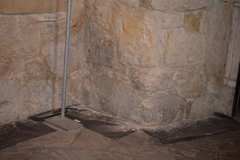
On September 1, 2016 black butcher paper measuring 15” wide was laid out around the perimeter interior walls of the Confessional, Baptistery, Monk’s Burial Ground and Sacristy of the Alamo Church. Dated photographs of the black paper in each room were collected monthly.
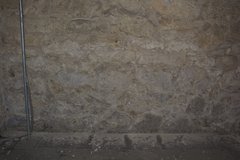
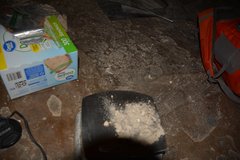
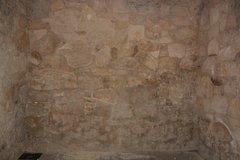
The existing wall surface (6’ to floor) was assessed inch by inch to determine which stone and mortar areas were friable (at risk of further degradation) and which were stable.
Project Results
A thorough written and photographic documentation was compiled and the weight of the wall deterioration calculated. In 600 days the total amount of wall loss collected from all four rooms was over 64 pounds.
As a result of this project, conservators now know that the Alamo Church’s walls are deteriorating daily. This degree of wall loss is a very serious matter. But thankfully, this project has provided essential evidence of the wall deterioration and will help preserve the Alamo Church long term.


